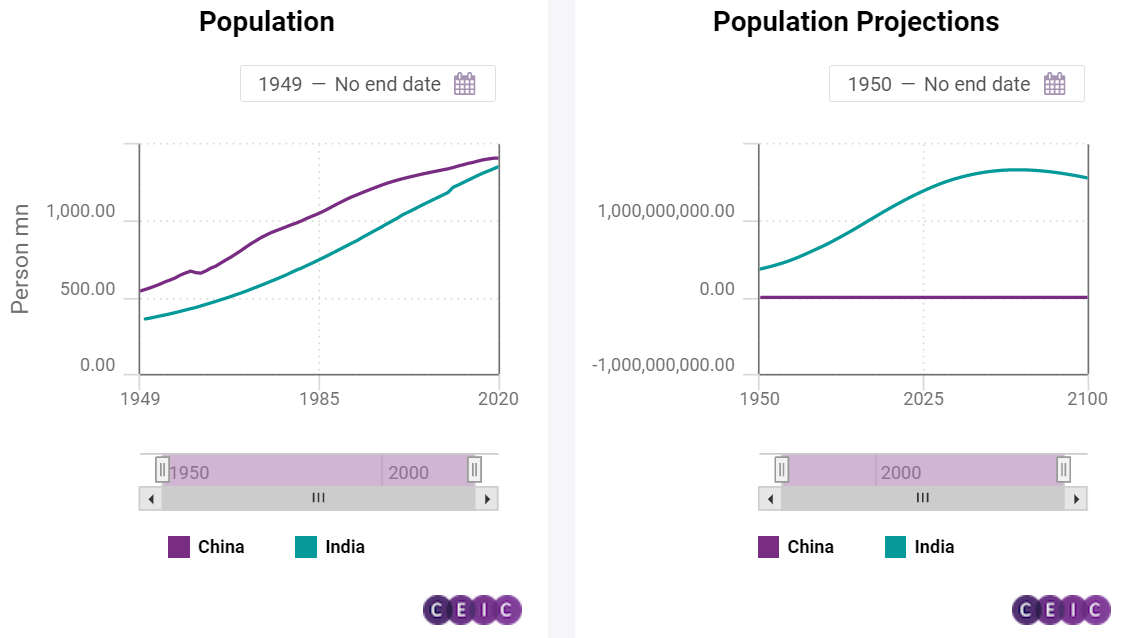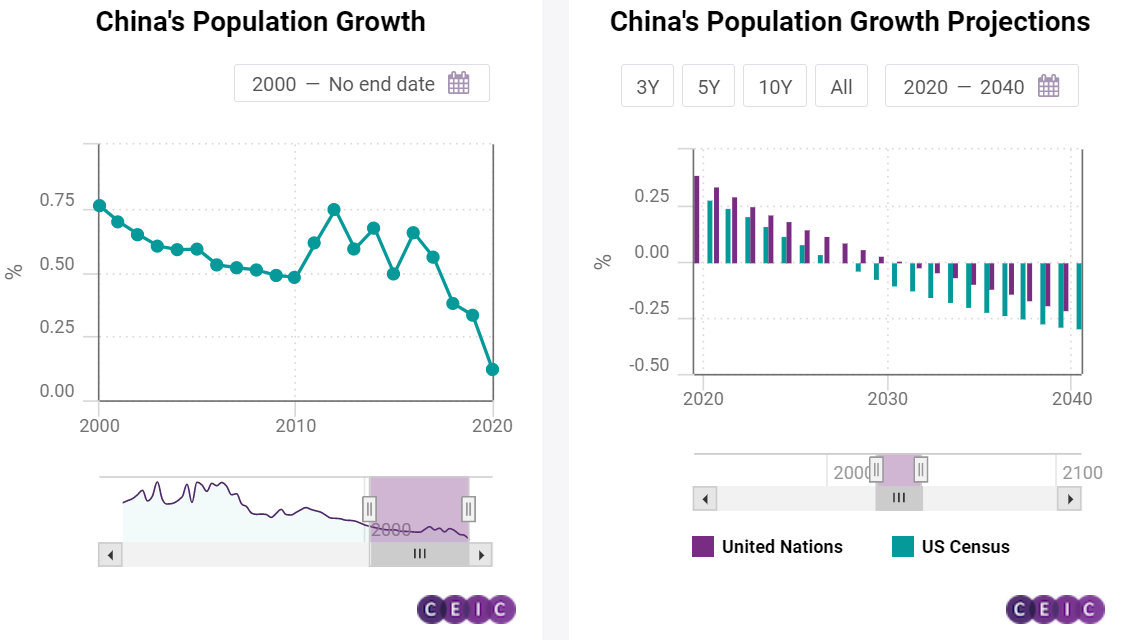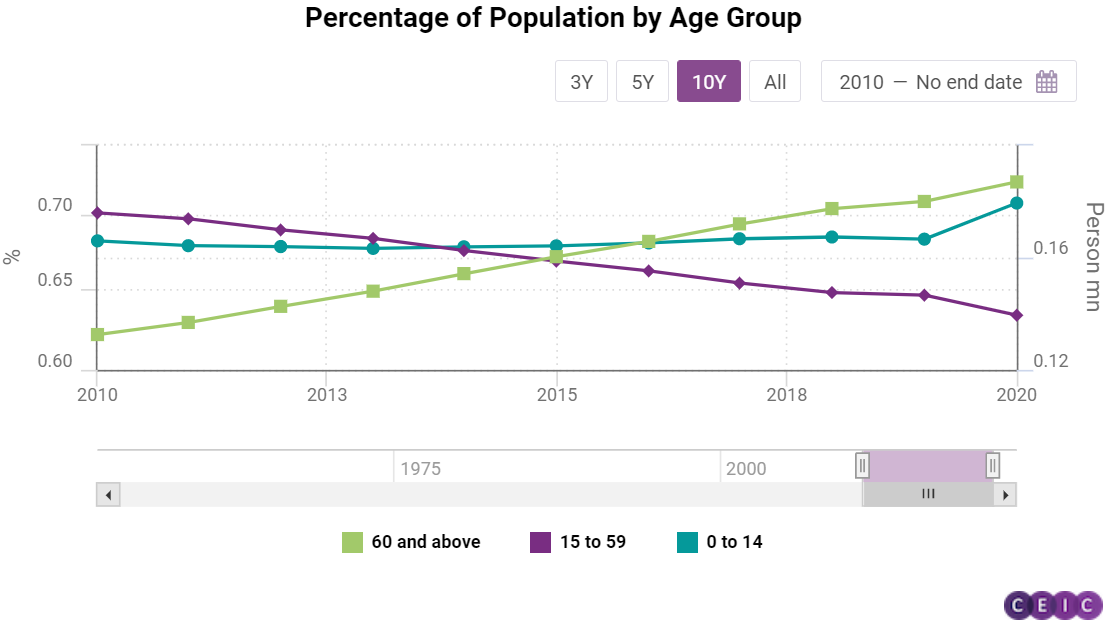
China's Seventh National Population Census was conducted in 2020 by China's National Bureau of Statistics. The results of the once-in-a-decade census were released in May 2021, providing important information on the country's demographic trends. Here in this insight, we look at five key messages from the census.
The 2020 census will probably be China's last one as the world's most populous country. The country’s population was 1.41bn people, the 2020 census results released in May 2021 showed. China’s vast labour pool was one of the most important driving forces behind the country’s rapid economic growth over the past decades. The large population also provides an unparalleled consumption market. However, due to higher population growth, the second-most populous country, India, is catching up quickly. The 2010 census showed that the difference in population between the two countries was 154.9mn people in favour of China, while as of 2020 that difference is only 56.8mn people. According to the US Census projections, India is going to surpass China and become the world's most populous country in 2027, while the IMF predicts this to happen even earlier in 2023.

And the last census with a growing population? The census data showed that China’s population growth in the past decade was the slowest since the 1950s. From 2011 to 2020, the average annual population growth was 0.53%, 0.04 pp less than that in the previous decade. In 2020, China’s population grew by a mere 0.12% y/y, slowing down significantly from the 0.33% annual growth rate in 2019. According to the US Census Bureau projections, the Chinese mid-year population will peak in 2028, which is two years before the next population census in 2030. The United Nations, however, projects a peak in 2032.

Births are declining and the Chinese government is forced to ease the birth policy even further. In 2016 China put an end to its one-child policy and began to allow married couples to have up to two children. The implementation of the two-child policy resulted in a slight increase in the share of people aged 14 or under to 17.95% from 16.6% in the previous decade, census data showed.

The continued decline in births, however, has cast doubts on the effectiveness of the policy shift. In 2020, the number of children born in China fell to 12mn from 14.65mn in 2019, marking the fourth consecutive year of decline. In 2020, China’s fertility rate was only 1.3 children per woman. In an effort to reverse the trend, on May 31, China announced that all married Chinese couples will be allowed to have up to three children.
Sign in to access all datasets for this insight piece here. Alternatively, you can learn more about the CEIC China Premium Database - the premier source for everything you need to know about the Chinese economy, housing an unprecedented wealth of information revealing the drivers of this market.
.png?width=160&name=ceic-logo-Vector%20logo%20no%20tagline%20(002).png)
